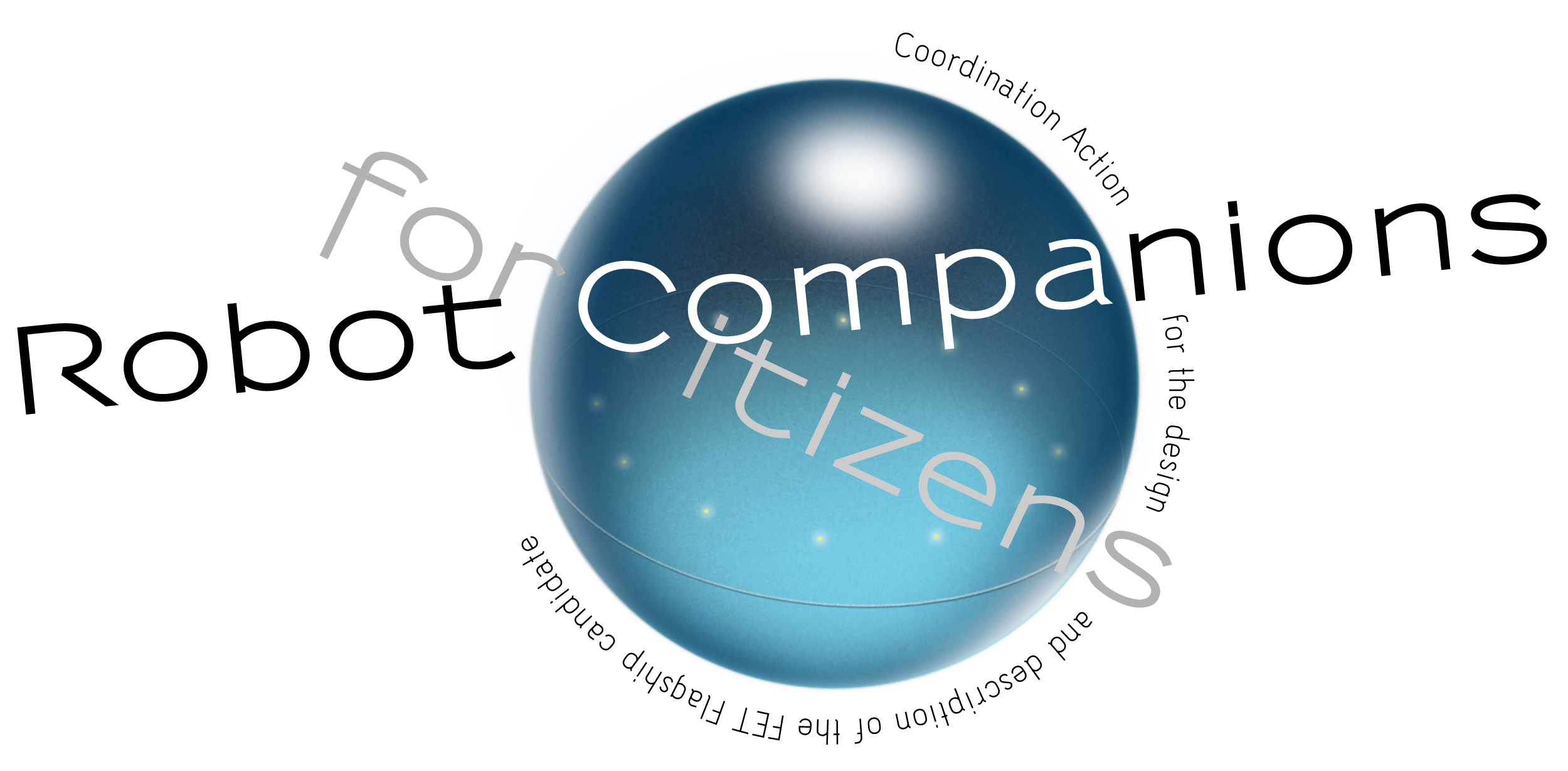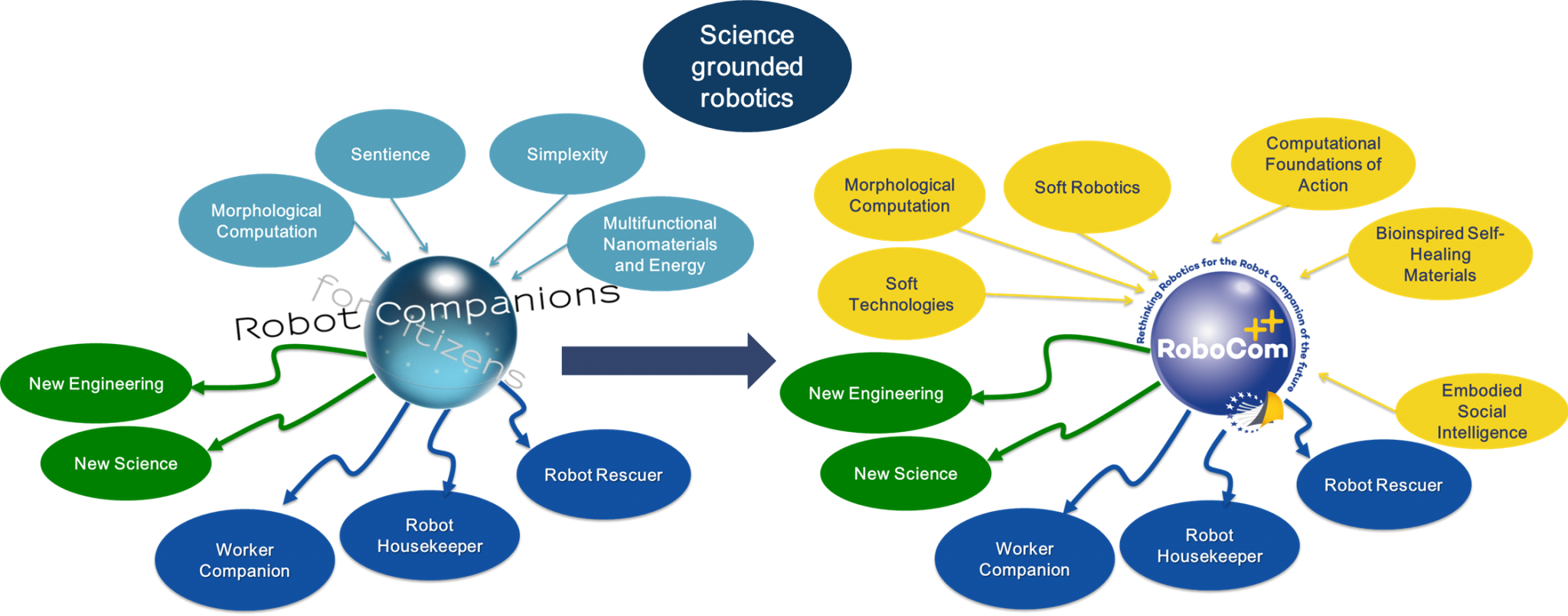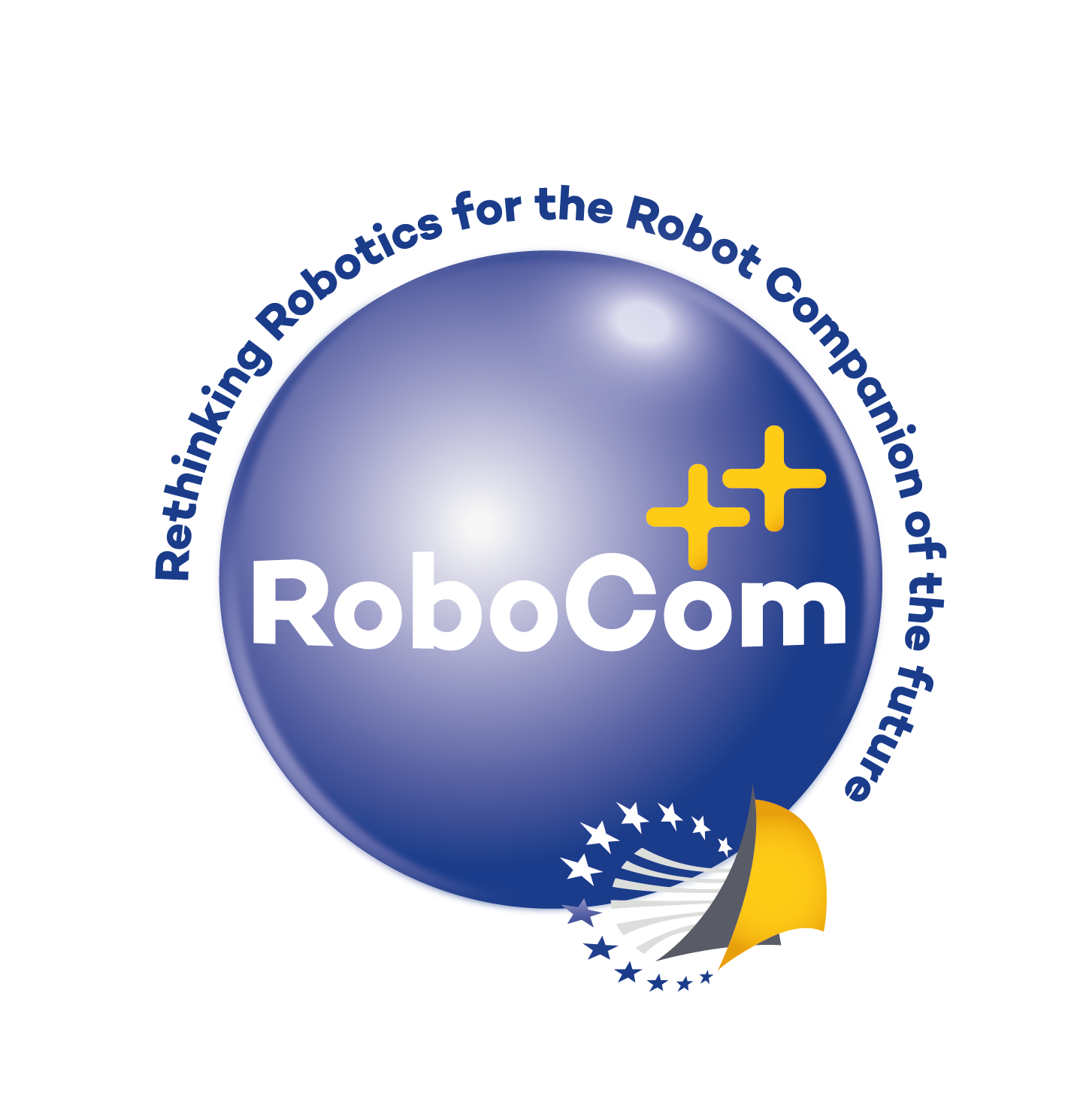The history of RoboCom++ FET-Flagship Proof-of-concept-project started as early as in 2009 when the FET-Flagship Program was born. It is intertwined with the story of the still continuing quest of the robotics community to develop a new science-grounded paradigm for the design and development of the Robot Companions of the future. After a policy elaboration process started in 2009, in 2010 an open consultation was held closing in July of the same year. In 2011 the Call for ‘FET-Pilots’ was launched. FET-Pilots were Coordination Actions (networking projects for those not familiar with European funding mechanisms of research) with the objective of preparing a FET-Flagship Proposal for the 2012 Call for FET-Flagship projects. CA-RoboCom was one of the Pilots selected out from more than 30 proposals. RoboCom was an EU-grounded initiative with worldwide vision, Coordinated under a strategic alliance between Istituto Italiano di Tecnologia and Scuola Superiore Sant’Anna, Italy.
History of RoboCom++ Project
CA-RoboCom

CA-RoboCom
FET Flagship initiative “Robot Companions for Citizens” (RCC)
The coordination action CA-RoboCom designed and described the FET Flagship initiative “Robot Companions for Citizens” (RCC) including its Scientific and Technological framework, governance, financial and legal structure, funding scheme, competitiveness strategy and risk analysis. The goal of the FET Flagship initiative RCC (http://www.robotcompanions.eu/) was to realize a unique and unforeseen multidisciplinary science and engineering program supporting a radically new approach towards machines and how we deploy them in our society. The vision of the Robot Companions for Citizens was an ecology of sentient machines that should help and assist humans in the broadest possible sense to support and sustain our welfare. The main characteristics of RCC were soft bodies based on the novel integration of solid articulated structures with flexible properties and soft behaviour based on new levels of perceptual, cognitive and emotive capabilities. The RoboCom FET Flagship aimed to bridge «Excellent Science» and «Societal Impact» with 5 main pillars: Multifunctional Nanomaterial and Energy, Morphological Computation, Simplexity, Sentience, Society.
After a Call for Flagship issued in 2012, two Flagship were selected: Graphene (https://graphene-flagship.eu/ ) and Human Brain Project (https://www.humanbrainproject.eu/en/).
RoboCom was very well evaluated, but it was ranked third and unfortunately it was not funded.
In 2016, after a few year maturation process, the FLAG-ERA Joint Transnational Call for FET-Flagship Proof-of–concept projects (https://www.flagera.eu/flag-era-calls/jtc-2016/) was issued on the 4 topics of the FET-Pilots that were not funded in the 2012 first Call for Flagship. RoboCom++ was selected for the topic ‘Cooperative Robotics’.

RoboCom++ Project springs from the RoboCom community and wants to exploit the knowledge and the strong effort of CA-RoboCom in order to lay the foundation for a future global interdisciplinary research programme on science-based transformative Robotics, to be launched by the end of the H2020 Programme. It leverages on the past experience and mistakes and more importantly on several years of research more. It aims to go beyond the vision of RoboCom. For example, we have, for now abandoned the idea of tackling with Sentience and other topics related to Consciousness to focus on ‘embodied intelligence’, as explained here.

